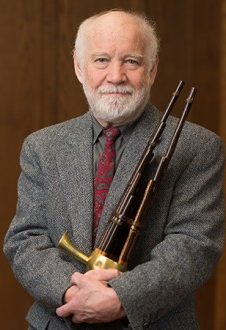Alan Thrasher
Research Area
Education
Ph.D. (Wesleyan University, 1980)
About
Alan Thrasher began his study of East Asian music during the late 1970s, following earlier training in Baroque music performance, notably with LaNoue Davenport and other musicians in New York, upon which he became particularly interested in questions of ornamentation for recorder flutes and harpsichord.
His ethnomusicology fieldwork, conducted in Taiwan, Hong Kong, mainland China, Japan and northern Thailand, has been focussed primarily on Chinese and related instrumental music, including performance of dizi and xiao flutes, pipa lute, qin zither and other instruments – notably with Lui Pui-Yuen, Huang Jinpei and Li Minxiong. Since 1984, Alan has served as coordinator and contributor of Chinese musical instrument entries for The New Grove Dictionary of Musical Instruments (London: Macmillan, 1984) and subsequently for The Grove Dictionary of Musical Instruments, 2nd edition (New York: Oxford, 2014).
Dr. Thrasher’s publications have appeared in numerous journals such as Asian Music, Ethnomusicology and the CHIME Journal, notably on topics such as Confucian ritual music, traditional heterophonic practice, performance variation (bianzou), use of melodic models (qupai), examination of suite forms, Chinese zheng and Japanese koto repertoires compared, and related structural issues. Other important China entries have appeared in Ethnomusicology: Historical and Regional Studies (Norton, 1993), The New Grove Dictionary of Music and Musicians, 2nd edition (notably, “China §I: General”, “China §III: Instruments”, London: Macmillan, 2001), the Garland Encyclopedia of World Music (2002) and the Oxford Handbook of Chinese Music (New York: Oxford, 2022). He has written and edited five books, the most recent being Sizhu Instrumental Music of South China: Ethos, Theory and Practice (Leiden: Brill, 2008), Yueqi: Chinese Musical Instruments in Performance (Vancouver: BC Chinese Music Association, 2011) and Qupai in Chinese Music: Melodic Models in Form and Practice (New York: Routledge, 2016). Alan is still active in both Baroque and Chinese music research and teaching part-time at UBC and privately.
